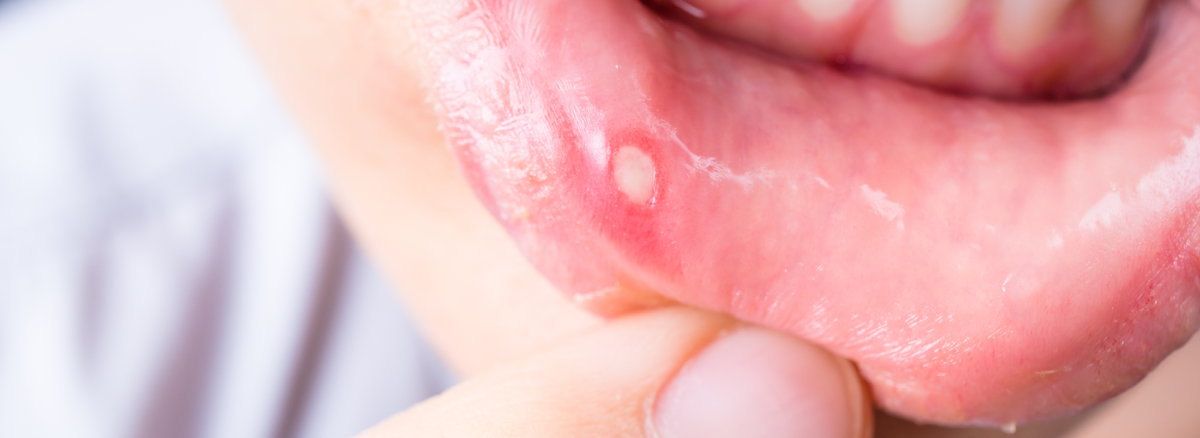There are a variety of sores that can occur in or around the mouth. Most are benign, but some may be indicative of cancer.
Canker Sores
These small, creamy white ulcers have a red border and always appear inside the mouth. Canker sores can be painful, but they are not contagious. They usually heal in one-to-two weeks. Prescription drugs and over-the-counter topical treatments can help reduce pain.
Cold Sores
Also known as fever blisters, cold sores are fluid-filled blisters that form on the lips or around the mouth. Cold sores are usually caused by the herpes simplex virus and are both contagious and painful. Fever, sunburn, trauma, hormonal changes or emotional upset can trigger their appearance. While there is currently no cure, cold sores can be treated with prescription ointments to help alleviate the pain. It is also important to wash your hands frequently and avoid sharing personal products to help prevent the spread of the infection to other people.
Candidiasis
Also known as oral thrush, this mouth sore is caused by a fungal infection. Painful red and cream-colored patches form on moist areas of the mouth. Candidiasis can cause difficulties with swallowing and taste. It is most commonly seen by denture wearers or people who have problems with their immune systems. Sometimes it occurs as a result of an unrelated antibiotic treatment, which can decrease normal bacterial development in the mouth. Saliva substitutes and antifungal creams are used to treat candidiasis.
White Patches
Chronic irritations inside the mouth, such as cheek chewing, dentures or braces, sometimes cause benign white patches to form inside the mouth. The treatment is to alleviate the irritation to allow for natural healing.
Leukoplakias
Leukoplakias consist of thick, white lesions that most commonly form beneath or around the tongue, cheeks or gums. Leukoplakias are painless, but can become cancerous over time. These mouth sores are most often seen in tobacco users. A biopsy may be needed to accurately diagnose leukoplakias.
Oral Cancer
Oral cancers appear as red or white patches of mouth tissue or small ulcers that look like canker sores but are painless. Oral cancers usually form on the tongue or floor of the mouth, but can occur on any tissue in and around the mouth. This includes cancers of the tonsils, adenoids, uvula (soft palate), roof of the mouth (hard palate), inside the lining of the cheeks, the gums, teeth, lips, the area behind the wisdom teeth, and salivary glands. Some of these lesions may be benign, others may be malignant, and still, others are precancerous. The most common type of precancerous cells in the mouth are:
- Leukoplakias: Leukoplakias consist of thick, white lesions that most commonly form beneath or around the tongue, cheeks or gums. These mouth sores are most often seen in tobacco users.
- Erythroplakias: These lesions appear as a red, raised area in the mouth and have a higher incidence of becoming malignant than leukoplakias.
A biopsy is often needed to diagnose leukoplakias and erythroplakia.
Squamous cell carcinomas are the most common type of oral cancer. Less common are lymphoma and salivary gland cancers. Most oral cancers occur in people age 45 and older. When cancers of the mouth do metastasize, they are most likely to spread to the lymph nodes in the neck.
If you have a mouth sore that won’t heal, please contact our office and schedule an appointment with one of our otolaryngologists.

